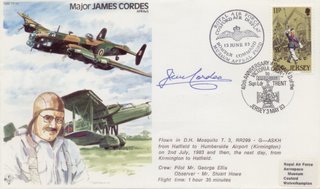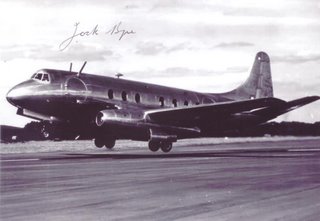
NASA test pilot Fred Drinkwater flew a specially equipped Convair CV-990 aircraft from Moffett Field, California, to Edwards Air Force Base, California, November 1, 1972, to refine steep and final aircraft approaches to possibly be used for a space shuttle vehicle to land on a hard surface runway. The Convair aircraft had pilot flight instruments that would be similar to those in the space shuttle Enterprise being manufactured by Rockwell International, the company that had won the competitive U.S. Government bid to build the space shuttle in Palmdale, California.
Fred Drinkwater was a Marine Corps aviator and a pioneer of experimental aviation. He began his flight career as a Corsair pilot in Korea, where he was awarded the Distinguished Flying Cross. Upon returning home, he took a position as a test pilot at NASA Ames Research Center. He continued as a pilot in the Marine Corps Reserves, commanding a squadron of A-4s at Alameda NAS. He retired from the Marines in 1986 as a full colonel, and from Ames in 1988 as Chief, NASA Ames Research Aircraft Operations.
During his career at Ames Fred worked on a wide variety of flight programs. He developed flying techniques for the VTOL jet X-14, and worked with fellow Navy pilot Neil Armstrong developing techniques for landing the LEM on the moon. He was in the vanguard of developing landing systems for extreme low L/D flight, precursor to the space shuttle landing scheme; he worked on many V/STOL aircraft and rotorcraft, including the Tiltrotor, precursor to the Marine V-22 Osprey. Other aeronautics projects included numerous flight simulations, aviation safety, accident recreation, etc. Fred also flew NASA airborne sciences projects in high-altitude astronomy, advanced radars, sea ice dynamics, arctic mammal surveys, hurricane formation, and many others.
On 12 August 1959, Fred Drinkwater became the first NASA test pilot to complete the full conversion of a tiltrotor to airplane mode flying the Bell XV-3. Fred Drinkwater tested many aircraft, including the XV-3 (1957), the JF-104A Starfighter, the Skylancer F-5, the VZ-9AV Avrocar and the Ryan VZ-3RY




















































